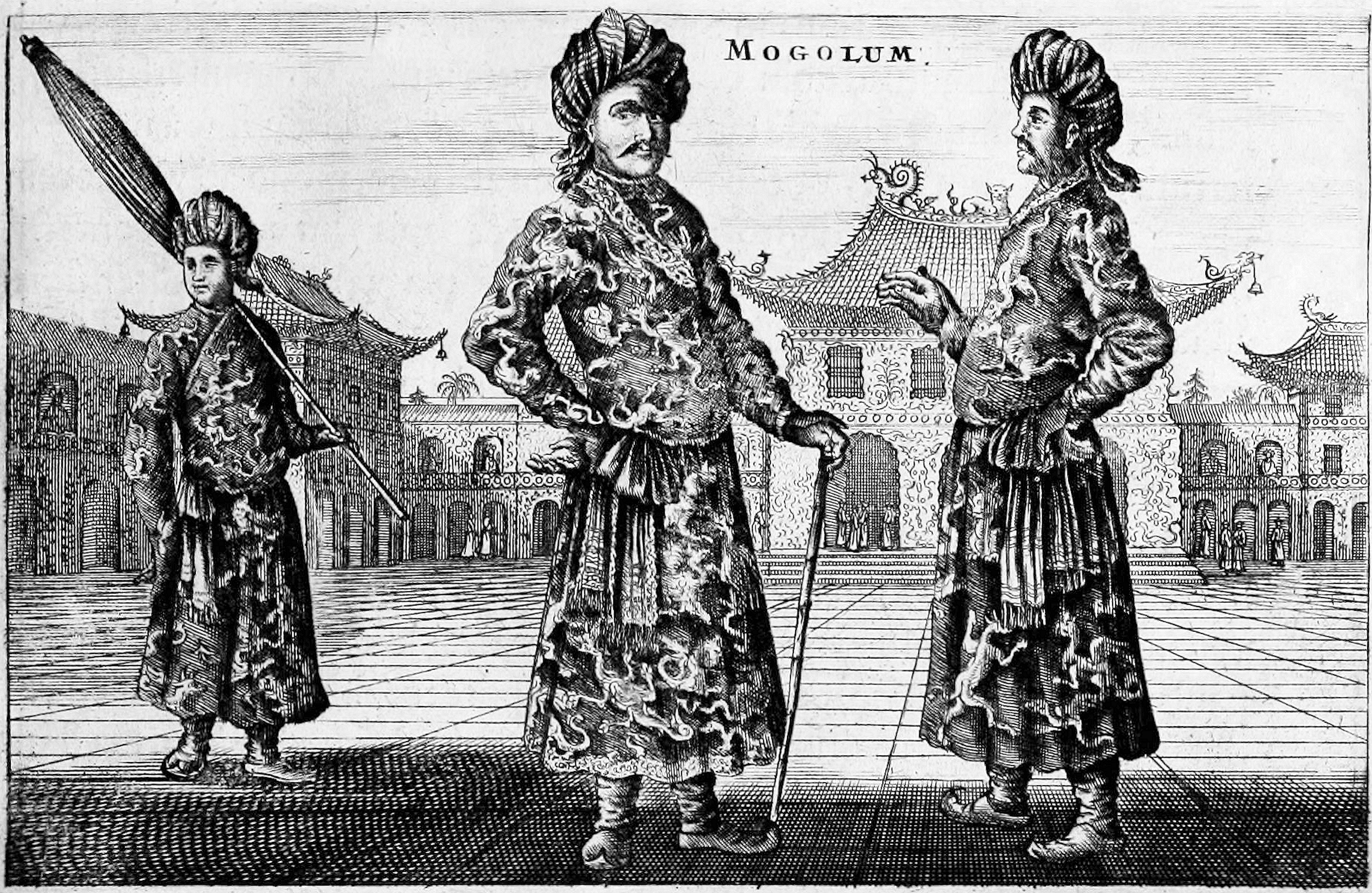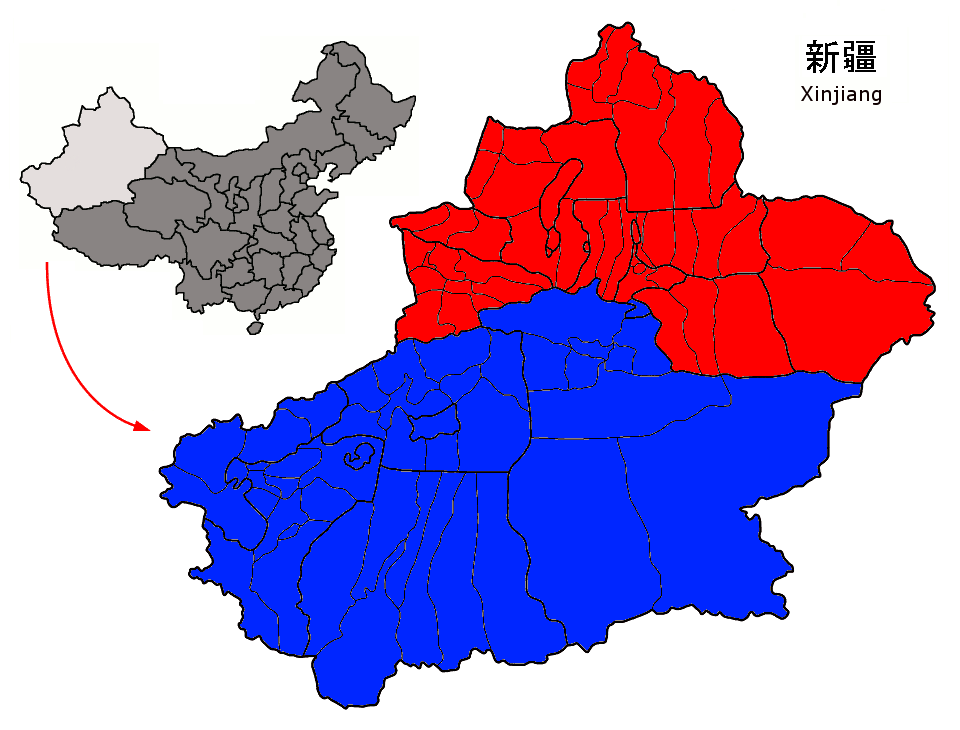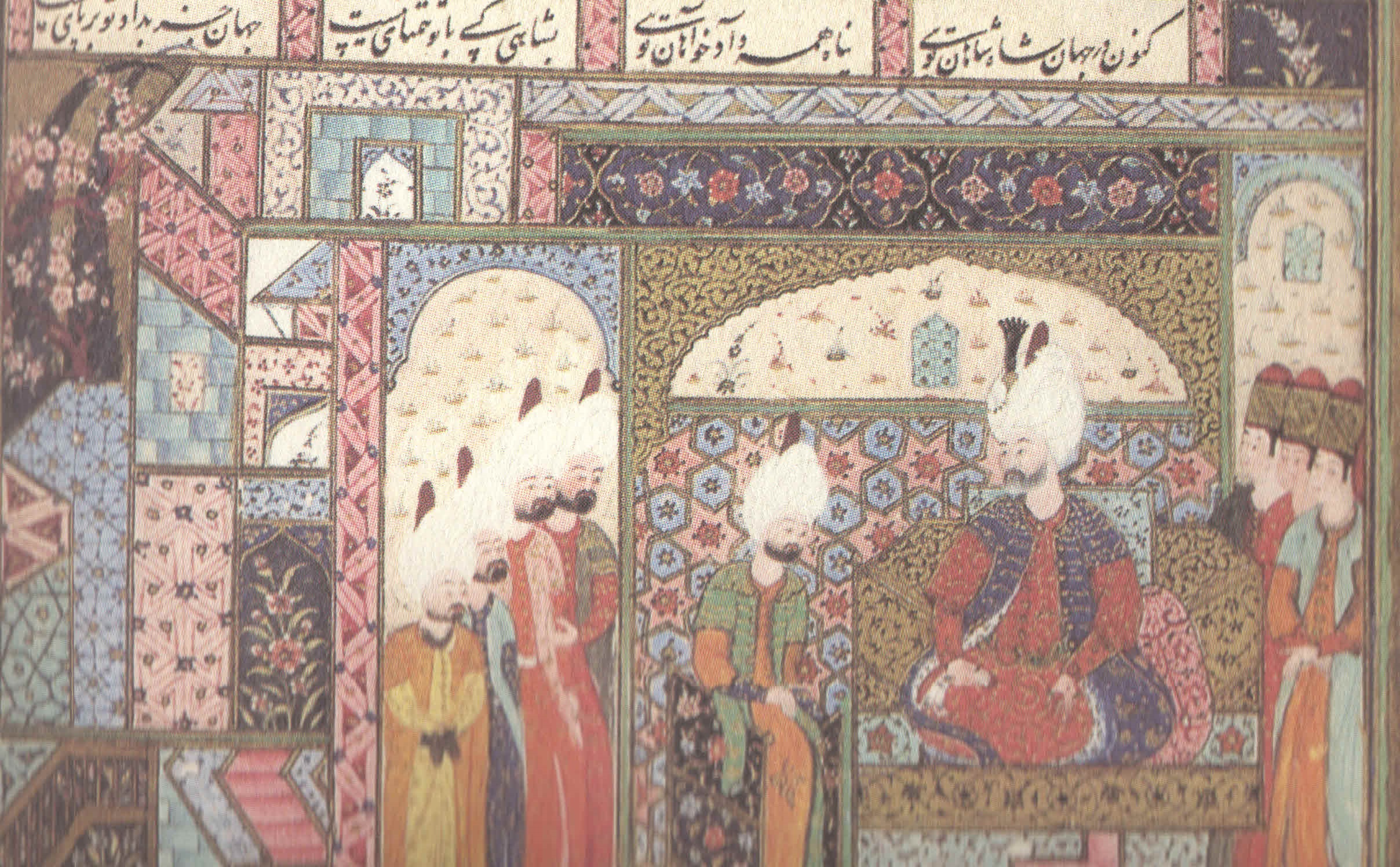|
Dughlats
The Dughlat clan ( kk, Дулат, Dulat, lit=ruthless or fierce warrior; Mongolian: '' Dolood/sevens, Doloo/seven; Middle Mongolian: Doluga, Dolugad''; Dulğat; ) was a Mongol (later Turko-Mongol) clan that served the Chagatai khans as hereditary vassal rulers of several cities in western Tarim Basin, in modern Xinjiang, from the 14th century until the 16th century. The most famous member of the clan, Mirza Muhammad Haidar, was a military adventurer, historian, and the ruler of Kashmir (1541–1551). His historical work, the ''Tarikh-i Rashidi'', provides much of the information known about the family. History Early history The Dughlat tribe is mentioned as having supported Genghis Khan during his creation of the Mongol Empire in the early 13th century. Rashid al-Din Hamadani identifies the Dughlad (Dughlat) as a minor tribe of the Mongols. At an early date the entire tribe moved out of Mongolia and eventually settled in the area comprising the ''ulus'' of Chagatai Kha ... [...More Info...] [...Related Items...] OR: [Wikipedia] [Google] [Baidu] |
Moghulistan
Moghulistan (from fa, , ''Moghulestân'', mn, Моголистан), also called the Moghul Khanate or the Eastern Chagatai Khanate (), was a Mongol breakaway khanate of the Chagatai Khanate and a historical geographic area north of the Tengri Tagh mountain range, on the border of Central Asia and East Asia. That area today includes parts of Kazakhstan, Kyrgyzstan, and northwest Xinjiang, China. The khanate nominally ruled over the area from the mid-14th century until the late 17th century. Beginning in the mid-14th century a new khanate, in the form of a nomadic tribal confederacy headed by a member of the family of Chagatai, arose in the region of the Ili River. It is therefore considered to be a continuation of the Chagatai Khanate, but it is also referred to as the Moghul Khanate. In actuality, local control rested with local Mongol Dughlats or Sufi Naqshbandi in their respective oases. Although the rulers enjoyed great wealth from the China trade, it was beset by c ... [...More Info...] [...Related Items...] OR: [Wikipedia] [Google] [Baidu] |
Yarkent Khanate
The Yarkent Khanate, also known as the Yarkand Khanate and the Kashghar Khanate, was a Sunni Muslim Turkic state ruled by the Mongol descendants of Chagatai Khan. It was founded by Sultan Said Khan in 1514 as a western offshoot of Moghulistan, itself an eastern offshoot of the Chagatai Khanate. It was eventually conquered by the Dzungar Khanate in 1705. Capital Yarkent served as the capital of the Yarkent Khanate, which was also known as the Yarkent State (''Mamlakati Yarkand''), from the establishment of the Khanate (1514 AD) to its fall (1705 AD). The previous Dughlat state of Mirza Abu Bakr Dughlat (1465–1514) of Kashgaria also used Yarkent as the capital of state. History Background The Khanate was predominantly Uyghur/ Turki; some of its most populated cities were Hotan, Yarkent, Kashgar, Yangihissar, Aksu, Uchturpan, Kucha, Karashar, Turpan and Kumul. It enjoyed continued dominance in the region for about 200 years until it was conquered by the Dzungar Khan, ... [...More Info...] [...Related Items...] OR: [Wikipedia] [Google] [Baidu] |
Yarkand
Yarkant County,, United States National Geospatial-Intelligence Agency also Shache County,, United States National Geospatial-Intelligence Agency also transliterated from Uyghur as Yakan County, is a county in the Xinjiang Uyghur Autonomous Region, China, located on the southern rim of the Taklamakan Desert in the Tarim Basin. It is one of 11 counties administered under Kashgar Prefecture. The county, usually referred to as Yarkand in English, was the seat of an ancient Buddhist kingdom on the southern branch of the Silk Road and the Yarkand Khanate. The county sits at an altitude of and had a population of . The fertile oasis is fed by the Yarkand River, which flows north down from the Karakorum mountains and passes through the Kunlun Mountains, known historically as the Congling mountains (lit. 'Onion Mountains' - from the abundance of wild onions found there). The oasis now covers , but was likely far more extensive before a period of desiccation affected the re ... [...More Info...] [...Related Items...] OR: [Wikipedia] [Google] [Baidu] |
Chagatai Khanate
The Chagatai Khanate, or Chagatai Ulus ( xng, , translit=Čaɣatay-yin Ulus; mn, Цагаадайн улс, translit=Tsagaadain Uls; chg, , translit=Čağatāy Ulusi; fa, , translit=Xânât-e Joghatây) was a Mongol and later Turkicized khanate that comprised the lands ruled by Chagatai Khan, second son of Genghis Khan, and his descendants and successors. At its height in the late 13th century the khanate extended from the Amu Darya south of the Aral Sea to the Altai Mountains in the border of modern-day Mongolia and China, roughly corresponding to the area once ruled by the Qara Khitai (Western Liao dynasty). Initially, the rulers of the Chagatai Khanate recognized the supremacy of the Great Khan,Dai Matsui – A Mongolian Decree from the Chaghataid Khanate Discovered at Dunhuang. Aspects of Research into Central Asian Buddhism, 2008, pp. 159–178 but by the reign of Kublai Khan, Ghiyas-ud-din Baraq no longer obeyed the emperor's orders. During the mid-14th century, t ... [...More Info...] [...Related Items...] OR: [Wikipedia] [Google] [Baidu] |
Mirza Muhammad Haidar Dughlat
Mirza Muhammad Haidar Dughlat Beg ( Persian: میرزا محمد حیدر دولت بیگ c. 1499/1500 – 1551) was a Chagatai Turco-Mongol military general, governor of Kashmir, and a historical writer, He was a Turkic speaking Dughlat prince who wrote in the Persian and Chagatai languages, Haidar and Babur were cousins on their mother's side. Campaigns He first campaigned in Kashmir in 1533, on behalf of Sultan Said Khan, of Kashgar. However, he did not stay long in Kashmir, leaving after making a treaty with the local sultan and striking coins in the name of Said Khan. He had also attacked Tibet through Ladakh but failed to conquer Lhasa. He returned in 1540, fighting for the Mughal Emperor Humayun, first son of Babur, this time for a military takeover at the invitation of one of the two rival factions that continually vied for power in Kashmir. This was shortly after Humayun's 1540 defeat at the Battle of Kanauj, where Dughlat was also on the losing side. Arriving ... [...More Info...] [...Related Items...] OR: [Wikipedia] [Google] [Baidu] |
Xinjiang
Xinjiang, SASM/GNC: ''Xinjang''; zh, c=, p=Xīnjiāng; formerly romanized as Sinkiang (, ), officially the Xinjiang Uygur Autonomous Region (XUAR), is an autonomous region of the People's Republic of China (PRC), located in the northwest of the country at the crossroads of Central Asia and East Asia. Being the largest province-level division of China by area and the 8th-largest country subdivision in the world, Xinjiang spans over and has about 25 million inhabitants. Xinjiang borders the countries of Mongolia, Russia, Kazakhstan, Kyrgyzstan, Tajikistan, Afghanistan, Pakistan and India. The rugged Karakoram, Kunlun and Tian Shan mountain ranges occupy much of Xinjiang's borders, as well as its western and southern regions. The Aksai Chin and Trans-Karakoram Tract regions, both administered by China, are claimed by India. Xinjiang also borders the Tibet Autonomous Region and the provinces of Gansu and Qinghai. The most well-known route of the historic Silk Road ... [...More Info...] [...Related Items...] OR: [Wikipedia] [Google] [Baidu] |
Kashgar
Kashgar ( ug, قەشقەر, Qeshqer) or Kashi ( zh, c=喀什) is an oasis city in the Tarim Basin region of Southern Xinjiang. It is one of the westernmost cities of China, near the border with Afghanistan, Kyrgyzstan, Tajikistan and Pakistan. With a population of over 500,000, Kashgar has served as a trading post and strategically important city on the Silk Road between China, the Middle East and Europe for over 2,000 years, making it one of the oldest continuously inhabited cities in the World. At the convergence point of widely varying cultures and empires, Kashgar has been under the rule of the Chinese, Turkic, Mongol and Tibetan empires. The city has also been the site of a number of battles between various groups of people on the steppes. Now administered as a county-level unit, Kashgar is the administrative center of Kashgar Prefecture, which has an area of and a population of approximately 4 million as of 2010. The city itself has a population of 506,640, and its ... [...More Info...] [...Related Items...] OR: [Wikipedia] [Google] [Baidu] |
List Of Modern Mongolian Clans
*This is a list of modern Mongol clans. Khalkha clans A Aduuchin B Barga; Barlas, Barulas; Borjigin; Besud; Belej/Balj D Daguur ( Khitans); Dolood (Dughlats) H Hatagin, Hurts (Khurts) J * Jalair E Eljigin Esud G Gorlos H Harnut J Jalaid ( Jalairs) N Naiman, Nirun O Olkhonud (Olkhunut) Sh Saljiud, Sharnud (Sharaid) T Taijiud or Taijuud, Tatar, Togoruutan Ts Tsoros ( Choros people) Y Yamaat; Yunsheebuu (Southern Mongols) Buryat clans A Atagan S Sunud B Bodonguud Daur clans D Daguur; Dular Hamnigan clans Altanhan (Mongol); Huuchid (Mongol) Oirat clans Bayad clans The Bayad (Mongol: Баяд/Bayad, lit. "the Riches") is the third largest subgroup of the Mongols in Mongolia and they are a tribe in Four Oirats. Bayads were a prominent clan within the Mongol Empire. Bayads can be found in both Mongolic and Turkic peoples. Within Mongols, the clan is spread through Khalkha, Inner Mongolians, Buryats and Oirats. Khoton clans Burut Myangad clans B ... [...More Info...] [...Related Items...] OR: [Wikipedia] [Google] [Baidu] |
Baig
Baig, also commonly spelled Bayg, Beigh, Beg, Bek, Bey, Baeg or Begh ( Persian: بیگ, ''Beig'', Turkish: '' Bey''), was a Turkic title which is today used as a name to identify lineage. It means ''Chief'' or ''Commander'' and is an honorific title. It is common in Turkey, Iran, the Caucasus, Central Asia, South Asia and Southeast Europe and among their respective diaspora. Etymology The origin of ''beg'' is still disputed, though it is mostly agreed that it is a Turkic loan-word. Two principal etymologies have been proposed. The first etymology is from a Middle Iranian form of Old Iranian '' baga''; though the meaning would fit since the Middle Persian forms of the word often mean "lord", used for the king or others. The second etymology is from Chinese ''po'' "eldest (brother), (feudal) lord". Gerhard Doerfer seriously considers the possibility that the word is genuinely Turkic. Whatever the truth may be, there is no connection with Turkish ''berk'', Mongolian ''berke'' " ... [...More Info...] [...Related Items...] OR: [Wikipedia] [Google] [Baidu] |
Mirza (name)
Mirza ( or ; fa, میرزا) is a name of Persian origin. It is used as a surname or prefix to identify patriarchal lineage. It is a historical royal and noble title, denoting the rank of a royal prince, high nobleman, distinguished military commander, or a scholar. Specifically, it was used as a title by (and today signifies patriarchal lineage to) the various Persian Empires, the Nogai Horde, Shirvanshahs and Circassians of the European Caucasus, as well as the Muslim Rajputs and mainly the Mughals / Moguls, both of the Indian Subcontinent. It was also a title bestowed upon members of the highest aristocracies in Tatar states, such as the Khanates of Kazan and Astrakhan. Etymology The original title ''Mīrzā'' or ''Merzāh'' is derived from the Persian term ''Amīrzādeh'' which literally means ''child of the Amīr'' or ''child of the ruler''. ''Amīrzādeh'' in turn consists of the Arabic title ''Amīr'' (English: ''Emir''), meaning "commander" and the Persian ... [...More Info...] [...Related Items...] OR: [Wikipedia] [Google] [Baidu] |
Amir
Emir (; ar, أمير ' ), sometimes transliterated amir, amier, or ameer, is a word of Arabic origin that can refer to a male monarch, aristocrat, holder of high-ranking military or political office, or other person possessing actual or ceremonial authority. The title has a long history of use in the Arab World, East Africa, West Africa, Central Asia, and the Indian subcontinent. In the modern era, when used as a formal monarchical title, it is roughly synonymous with " prince", applicable both to a son of a hereditary monarch, and to a reigning monarch of a sovereign principality, namely an emirate. The feminine form is emira ( '), a cognate for " princess". Prior to its use as a monarchical title, the term "emir" was historically used to denote a "commander", "general", or "leader" (for example, Amir al-Mu'min). In contemporary usage, "emir" is also sometimes used as either an honorary or formal title for the head of an Islamic, or Arab (regardless of religion) org ... [...More Info...] [...Related Items...] OR: [Wikipedia] [Google] [Baidu] |
Kazakh Khanate
The Kazakh Khanate ( kk, Қазақ Хандығы, , ), in eastern sources known as Ulus of the Kazakhs, Ulus of Jochi, Yurt of Urus, was a Kazakh state in Central Asia, successor of the Golden Horde existing from the 15th to 19th century, centered on the eastern parts of the '' Desht-i Qipchaq''. The khanate was established by Janibek Khan and Kerei Khan in 1465. Both khans came from Turco-Mongol clan of Tore which traces its lineage to Genghis Khan through dynasty of Jochids. The Tore clan continued to rule the khanate until its fall to the Russian Empire. From 16th to 17th century, the Kazakh Khanate ruled and expanded its territories to eastern Cumania (modern-day West Kazakhstan), to most of Uzbekistan, Karakalpakstan and the Syr Darya river with military confrontation as far as Astrakhan and Khorasan Province, which are now in Russia and Iran, respectively. The Khanate was later weakened by a series of Oirat and Dzungar invasions. These resulted in a decline ... [...More Info...] [...Related Items...] OR: [Wikipedia] [Google] [Baidu] |

.jpg)

_of_Kashgar%2C_73_CE.jpg)

.jpg)
